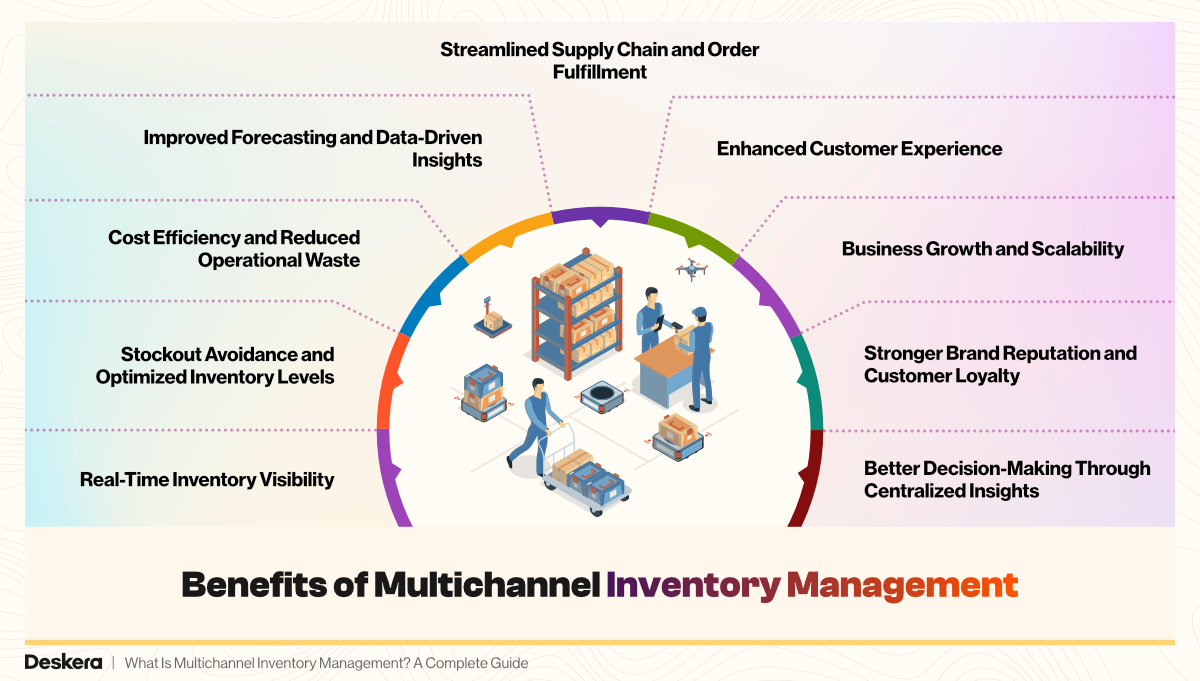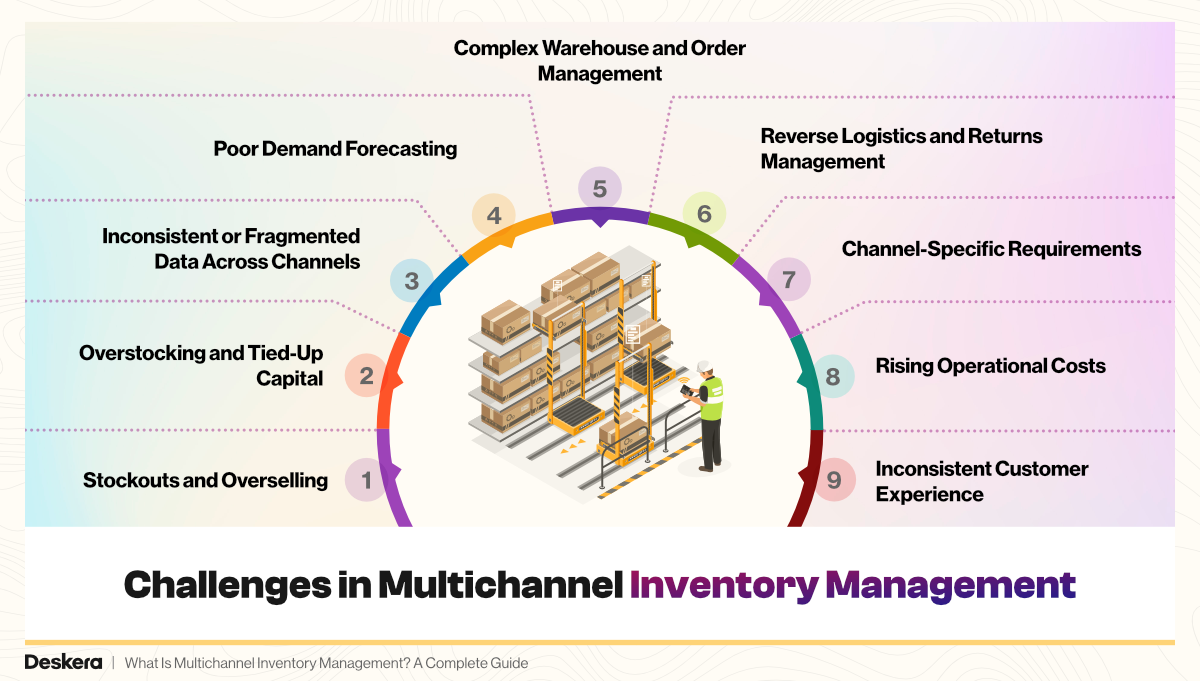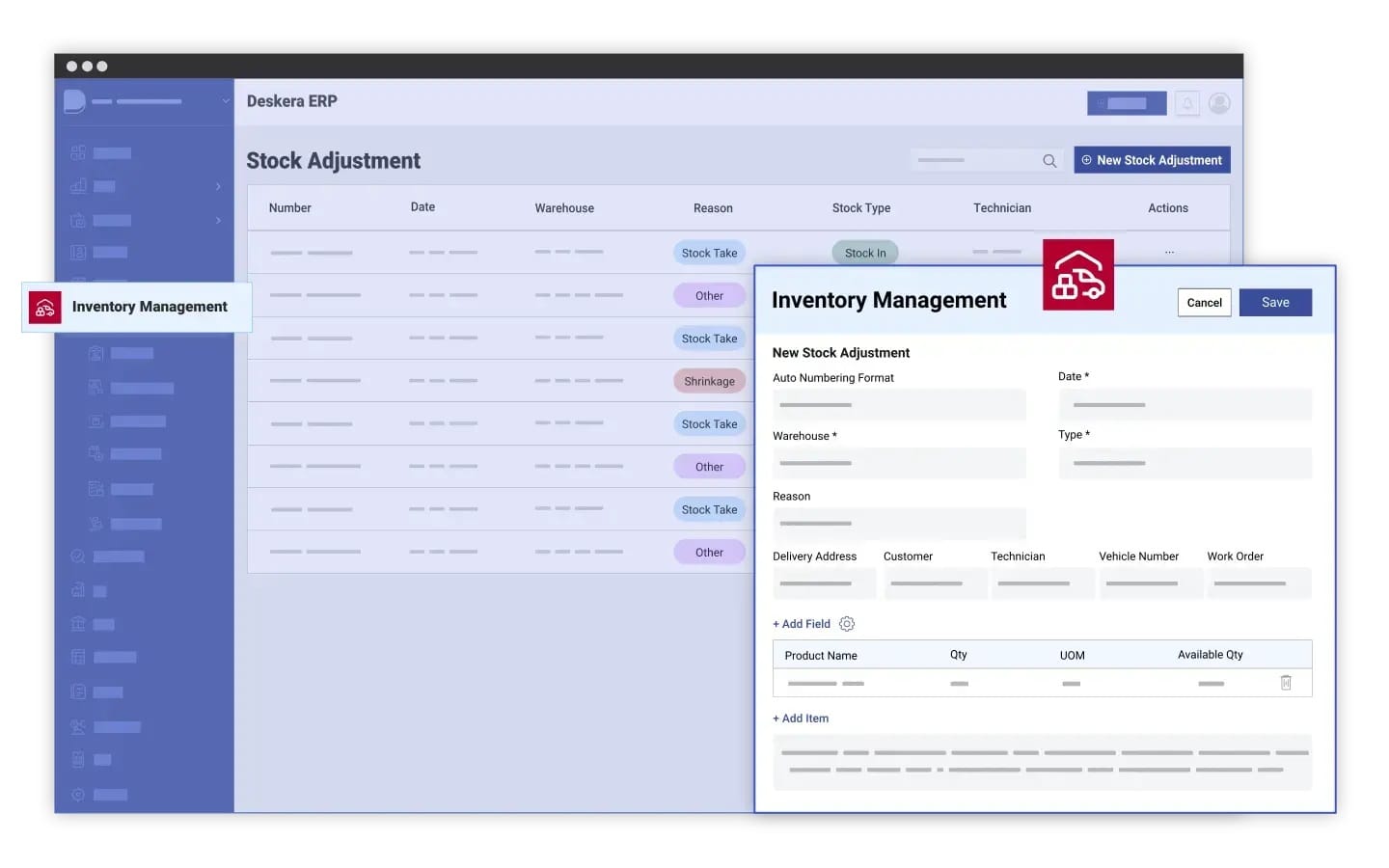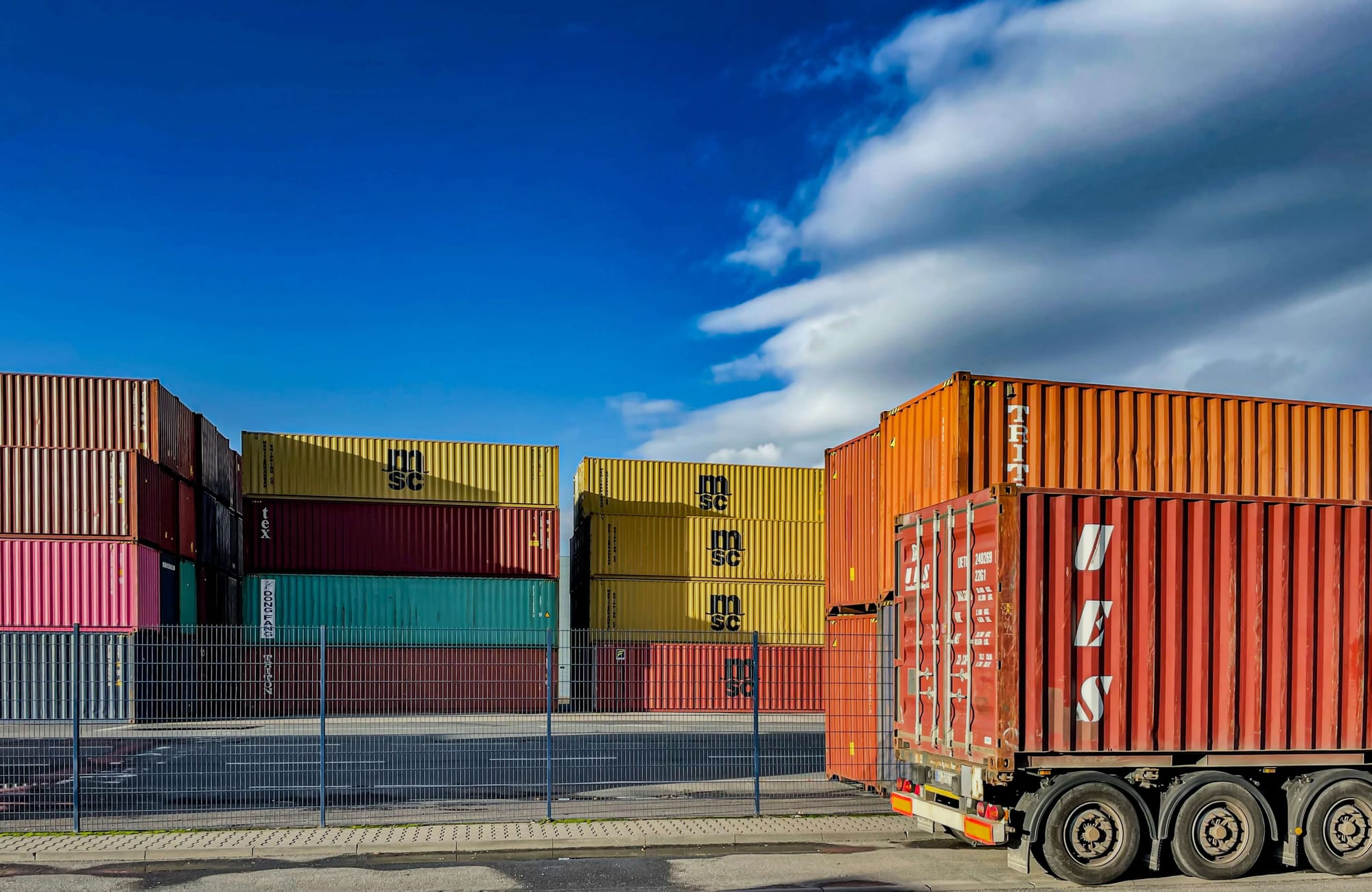In today’s fast-paced retail and e-commerce world, selling across multiple platforms has become more than just an option—it’s a necessity. From online marketplaces like Amazon and Shopify to physical retail stores, customers now expect a consistent and seamless shopping experience wherever they choose to buy. Managing stock across these different sales points, however, can quickly become a challenge without the right tools and strategy in place. That’s where multichannel inventory management comes into play, helping businesses maintain control and visibility over their inventory from a single, unified system.
Studies show that multichannel sellers can increase revenues by up to 190% compared to those who sell on a single channel, highlighting how vital diversification is to business growth. Yet, with greater opportunity comes greater complexity—especially when it comes to tracking orders, managing stock levels, and ensuring timely fulfillment across different platforms. Without proper synchronization, businesses risk overselling, stockouts, and dissatisfied customers, all of which can erode trust and profitability.
Multichannel inventory management bridges this gap by offering real-time insights and automation tools to help businesses maintain accurate stock data across every channel. It ensures that sales, purchases, and returns are updated automatically, giving teams the confidence to make informed decisions and deliver on customer expectations. In short, it transforms chaos into coordination, empowering businesses to meet demand efficiently while reducing operational strain.
This is where Deskera ERP plays a crucial role. Designed for modern businesses, Deskera ERP integrates all your sales channels, warehouses, and accounting functions into a single intelligent platform. With AI-driven insights from its assistant David, real-time inventory tracking, automated reordering, and mobile accessibility, Deskera enables you to manage your entire multichannel operation effortlessly. By simplifying complexity, it helps you focus on what truly matters—driving growth, improving customer satisfaction, and staying competitive in today’s multichannel economy.
What Is Multichannel Inventory Management?
Multichannel inventory management is the process of tracking, controlling, and optimizing inventory across multiple sales channels—such as eCommerce platforms, physical retail stores, social media shops, and third-party marketplaces. It ensures that every item in your inventory is accurately accounted for, regardless of where it’s being sold or stored. The goal is to maintain a single, real-time view of stock levels across all channels, allowing businesses to fulfill orders efficiently and avoid costly errors like overselling or stockouts.
As businesses expand into new platforms to reach a wider audience, managing inventory becomes increasingly complex. Each channel—be it your own website, a marketplace like Amazon, or a social platform like Instagram—comes with its own sales dynamics and fulfillment challenges. Without a centralized system, tracking stock manually across these platforms can lead to discrepancies, delayed orders, and lost sales opportunities. Multichannel inventory management helps overcome this by synchronizing inventory data in one place, giving businesses full control and visibility.
For example, imagine a clothing retailer that sells through a physical boutique, an online store, and a marketplace like Etsy. A multichannel inventory management system automatically updates stock levels when an item sells on any channel, ensuring that all other platforms reflect the accurate quantity in real time. This prevents situations where multiple customers purchase the same limited stock item simultaneously, improving both efficiency and customer satisfaction.
By integrating all inventory data into a unified, cloud-based system, multichannel inventory management enables businesses to respond quickly to demand fluctuations, forecast accurately, and reduce operational costs. It’s not just about tracking products—it’s about ensuring a smooth, consistent shopping experience across every customer touchpoint, no matter where they choose to buy.
Single-Channel Inventory Management vs. Multichannel Inventory Management
Inventory management looks very different depending on how many sales channels a business operates. While single-channel inventory management focuses on tracking stock in one centralized location, multichannel inventory management expands this approach to include multiple sales and distribution points.
The key difference lies in complexity and visibility—managing one channel is relatively straightforward, but as soon as sales extend to multiple platforms, real-time synchronization becomes critical.
In a single-channel inventory system, all sales, storage, and fulfillment activities occur within a single platform—such as a physical store, an eCommerce website, or a wholesale distribution point. Since inventory moves through one channel, stock tracking and demand forecasting are simpler and more predictable.
Businesses can easily determine how much to stock, when to reorder, and how to distribute goods because all inventory is managed in one place. This model works well for smaller operations or businesses that focus on one specific market segment.
However, multichannel inventory management introduces additional layers of complexity. Businesses selling across multiple touchpoints—like Amazon, Shopify, retail stores, and social media shops—must coordinate stock across dispersed warehouses, suppliers, and fulfillment centers. Each channel can have unique order patterns and lead times, making manual tracking impractical.
A multichannel inventory system centralizes this data, ensuring real-time updates and visibility across every location. This helps prevent stockouts, overstocking, and order errors while ensuring customers can shop seamlessly across platforms.
Here’s a quick comparison between the two approaches:
In essence, single-channel inventory management offers simplicity and control, while multichannel inventory management offers scalability, visibility, and flexibility. As customer expectations evolve and shopping behavior becomes more diverse, businesses adopting a multichannel approach gain a competitive edge—provided they have the right systems in place to manage it effectively.
Benefits of Multichannel Inventory Management

Implementing an effective multichannel inventory management strategy brings far-reaching advantages that extend beyond day-to-day stock control. It empowers businesses to meet customer expectations, streamline operations, and scale efficiently. Although it requires investment in technology and planning, the outcomes—higher revenue, operational visibility, and stronger customer loyalty—make it an essential part of modern commerce.
1. Real-Time Inventory Visibility
A major advantage of multichannel inventory management is having real-time visibility into stock levels across all sales channels and locations. Businesses can instantly see what’s available, where it’s stored, and what’s in transit.
This visibility prevents issues like overselling and helps maintain accurate product listings across multiple platforms. It ensures that customers always receive up-to-date information, whether they’re shopping in-store, online, or through a marketplace. Having this transparency also aids decision-making—businesses can quickly adjust inventory levels, restock bestsellers, and allocate products efficiently during peak sales periods.
2. Stockout Avoidance and Optimized Inventory Levels
Stockouts and overstocking are two of the most common problems that multichannel businesses face. Effective multichannel inventory management reduces both risks by maintaining balanced stock levels across all channels and locations.
By using accurate sales data and intelligent forecasting, businesses can ensure that popular products are always in stock while avoiding excess inventory that ties up cash flow. This balance not only improves sales performance but also reduces waste, storage costs, and markdowns.
3. Cost Efficiency and Reduced Operational Waste
Multichannel inventory management contributes significantly to cost optimization. When businesses can manage stock more efficiently, they minimize wasteful spending and improve overall profitability.
Accurate inventory tracking helps avoid unnecessary replenishment, excess storage, and last-minute expedited shipping costs. It also allows companies to fulfill orders from the nearest warehouse or location, saving on transportation expenses. Streamlined workflows and fewer manual errors further reduce labor costs and improve resource utilization.
4. Improved Forecasting and Data-Driven Insights
With multichannel inventory management, data from all sales channels is centralized and analyzed to reveal meaningful insights. Businesses gain a comprehensive view of product performance, seasonal trends, and customer demand patterns.
This visibility supports better forecasting and strategic decision-making. Managers can identify which products are selling fastest, which locations require restocking, and when demand spikes are likely to occur. Over time, these insights enable smarter purchasing decisions, reduced holding costs, and improved supply chain resilience.
5. Streamlined Supply Chain and Order Fulfillment
A well-implemented multichannel inventory management system simplifies supply chain operations by ensuring the right products are available in the right place at the right time.
Coordinating across multiple sales channels, warehouses, and logistics partners becomes much easier when data is synchronized. This improves order accuracy, reduces delays, and enhances the efficiency of fulfillment operations.
As a result, customers receive their orders faster and with fewer errors—an essential factor in maintaining competitive advantage in the digital retail landscape.
6. Enhanced Customer Experience
Customer expectations are higher than ever, and seamless service across all touchpoints is key to building trust. Multichannel inventory management supports this by ensuring consistent product availability and timely fulfillment across every sales platform.
Features like Buy Online, Pick Up In-Store (BOPIS) or ship-from-store rely on accurate, synchronized inventory data. Businesses that manage inventory efficiently can offer more flexible fulfillment options, reduce delivery times, and communicate clearly with customers about product status—resulting in higher satisfaction and repeat purchases.
7. Business Growth and Scalability
As businesses expand into new markets or add more sales channels, manual inventory management becomes unsustainable. Multichannel inventory management provides the foundation for scalable growth, allowing companies to manage higher order volumes and multiple platforms without losing control or efficiency.
It also supports market diversification by making it easier to add new sales channels, whether physical or digital, while maintaining consistency in stock levels and customer experience. This scalability enables businesses to capture a broader audience and sustain long-term growth.
8. Stronger Brand Reputation and Customer Loyalty
Consistency across channels plays a major role in shaping brand reputation. When customers experience reliable service, accurate product availability, and timely deliveries regardless of the platform they use, it builds confidence in the brand.
By ensuring consistent inventory data and order accuracy, multichannel inventory management minimizes negative experiences like out-of-stock items or delayed shipments. This reliability enhances customer trust and strengthens long-term loyalty—key factors for any brand looking to stand out in competitive markets.
9. Better Decision-Making Through Centralized Insights
A unified view of inventory performance across all channels enables faster, data-backed decisions. Businesses can easily identify best-selling items, understand regional demand patterns, and pinpoint inefficiencies in stock allocation or fulfillment.
Centralized reporting allows leaders to make strategic adjustments quickly—such as reallocating stock, optimizing pricing, or planning promotions based on real-time insights. These decisions not only improve short-term efficiency but also support long-term operational excellence.
Multichannel inventory management is not just a logistical necessity—it’s a strategic advantage. By providing visibility, accuracy, and control across all channels, it helps businesses prevent stockouts, lower costs, and deliver a superior customer experience. In an increasingly interconnected retail environment, mastering multichannel inventory management is the key to driving growth, efficiency, and customer loyalty.
Challenges and Solutions in Multichannel Inventory Management

Managing inventory across multiple sales channels can unlock significant growth opportunities—but it also introduces a high level of operational complexity. Businesses selling through physical stores, eCommerce platforms, marketplaces, and social media platforms face unique inventory management challenges.
From stock discrepancies to fulfillment delays, these issues can directly impact revenue and customer satisfaction. Fortunately, with the right systems and strategies, businesses can address these challenges effectively. Below are the major challenges in multichannel inventory management and detailed solutions for each:
1. Stockouts and Overselling
Challenge: When inventory is not synchronized in real time, businesses risk overselling products or running out of stock in certain channels. For instance, a viral product on Instagram may be sold by multiple customers simultaneously, resulting in canceled orders and disappointed buyers. Stockouts lead to lost sales and damage customer trust, while overselling can create operational headaches and penalties from online marketplaces.
Solution: Implement a centralized inventory management system that automatically updates stock across all channels in real time. Deskera ERP provides a unified dashboard that reflects every sale and return immediately, ensuring accurate stock visibility. Businesses can also set up automated low-stock alerts and reorder points to prevent stockouts before they happen, protecting both revenue and reputation.
2. Overstocking and Tied-Up Capital
Challenge: Overstocking occurs when businesses keep excessive stock on hand, often due to inaccurate forecasting or fear of stockouts. Overstocking increases storage costs, ties up capital, and can lead to obsolescence or spoilage—especially for seasonal, perishable, or trending items.
Solution: Use AI-driven demand forecasting to align stock levels with anticipated sales per channel. Deskera ERP’s AI assistant, David, analyzes historical sales data, seasonal trends, and channel-specific demand to recommend optimal stock levels. Businesses can now allocate inventory intelligently across locations, reduce unnecessary storage costs, and avoid dead stock.
3. Inconsistent or Fragmented Data Across Channels
Challenge: Using multiple disconnected platforms for sales, warehousing, and fulfillment leads to fragmented data. This makes it difficult to maintain a single source of truth, resulting in inaccurate reporting, mismanaged stock, and delayed decision-making.
Solution: Adopt a cloud-based, centralized ERP system that integrates all operations. Deskera ERP consolidates data from every sales channel, warehouse, and supplier into one platform. Managers gain real-time insights into stock levels, pending orders, and replenishment needs, enabling proactive decision-making and accurate reporting.
4. Poor Demand Forecasting
Challenge: Customer demand varies widely across sales channels, locations, and time periods. A product that sells quickly on Amazon might lag on Shopify, or social media promotions can create sudden surges in demand. Without accurate forecasting, businesses risk understocking popular items and overstocking slow movers, affecting revenue and increasing costs.
Solution: Use analytics-driven forecasting tools that account for channel-specific trends. Deskera ERP collects historical sales data across all channels and uses AI-based algorithms to predict demand variations, enabling businesses to maintain optimal inventory levels. This ensures products are available where they are most likely to sell, reducing lost sales and overstock risks.
5. Complex Warehouse and Order Management
Challenge: Multichannel fulfillment requires managing inventory across multiple warehouses, with each channel having unique packaging, shipping, and service requirements. Prioritizing orders, coordinating shipments, and allocating stock efficiently becomes increasingly difficult without automation.
Solution: Leverage multi-location inventory management and warehouse automation. Deskera ERP allows businesses to manage multiple warehouses from a single dashboard, track stock transfers, prioritize channel-specific orders, and automate picking, packing, and shipping workflows. This reduces errors, improves fulfillment speed, and ensures consistent customer satisfaction.
6. Reverse Logistics and Returns Management
Challenge: Returns are more frequent in eCommerce and multichannel sales, and processing them can disrupt inventory accuracy. Returns may need inspection, restocking, or returns to suppliers, creating complexity if each channel has different policies or procedures.
Solution: Standardize and automate reverse logistics processes. Deskera ERP automatically updates inventory when returned products are received and inspected, ensuring stock levels remain accurate. Businesses can also track return reasons, optimize restocking, and reduce the time between return and resale, minimizing revenue loss and enhancing customer trust.
7. Channel-Specific Requirements
Challenge: Every sales channel has its own rules, shipping expectations, and reporting standards. For example, Amazon has strict Order Defect Rate (ODR) rules, while social media shops may experience sudden demand spikes. Managing these variations while maintaining accurate inventory is complex.
Solution: Configure channel-specific workflows and integrations. Deskera ERP supports multiple marketplaces, eCommerce platforms, and retail stores, automating data synchronization, pricing updates, and fulfillment requirements for each channel. Businesses can maintain consistency while meeting platform-specific rules and expectations.
8. Rising Operational Costs
Challenge: Expanding across channels often increases storage, shipping, labor, and platform fees, which can reduce profit margins if not carefully managed.
Solution: Automate repetitive tasks and optimize workflows to reduce costs. Deskera ERP streamlines order management, purchasing, shipping, and reporting, helping businesses identify inefficiencies and minimize manual errors. With better visibility and automation, companies can balance operational costs while scaling effectively.
9. Inconsistent Customer Experience
Challenge: Customers expect the same level of service across all channels. Without synchronized inventory, delays, stockouts, or inconsistent pricing can frustrate buyers and damage brand loyalty.
Solution: Provide a unified view of stock and order fulfillment. Deskera ERP integrates inventory and customer data across channels, enabling accurate order tracking, timely shipping updates, and consistent service. Businesses can deliver a seamless customer experience, regardless of whether a purchase is made online, in-store, or through social media.
Multichannel inventory management is complex but manageable with the right technology. Platforms like Deskera ERP provide real-time visibility, AI-driven demand forecasting, centralized stock control, and automation across warehouses and channels. By implementing a unified inventory system, businesses can reduce errors, optimize stock allocation, lower operational costs, and ensure a seamless shopping experience across every sales channel.
Tips for Effectively Managing Multichannel Inventory
Managing inventory across multiple channels is one of the biggest operational challenges for growing businesses. Whether you’re selling through physical stores, your own website, or major online marketplaces, keeping track of stock levels and ensuring timely fulfillment can be complex. However, by following proven strategies and leveraging the right processes, businesses can bring structure, accuracy, and efficiency to multichannel operations.
Below are key tips to help you effectively manage multichannel inventory and maintain smooth operations across every sales platform.
1. Centralize Inventory Management
The first and most important step is to centralize your inventory data. When stock is managed separately across different platforms, it can lead to discrepancies, overselling, or missed sales opportunities. A unified inventory management system eliminates these issues by providing real-time visibility across all channels, ensuring stock updates automatically whenever a sale occurs.
Centralization also improves collaboration across departments—from procurement to fulfillment—so everyone is working with the same data. Whether you’re managing multiple warehouses, retail outlets, or eCommerce platforms, having a single source of truth streamlines order accuracy and customer satisfaction.
2. Automate Inventory Tracking and Replenishment
Automation is essential for accuracy and scalability. Automating key functions like inventory tracking, order updates, and stock replenishment reduces human error and speeds up operations. With automated reorder points, low-stock alerts, and demand-driven restocking, you can ensure that high-performing products are never out of stock.
Additionally, technologies like barcode or RFID scanning allow real-time tracking of goods through every stage—receiving, picking, packing, and shipping. This automation enhances visibility, reduces administrative overhead, and ensures you always have accurate stock data across all channels.
3. Standardize SKUs Across Channels
Many multichannel businesses struggle with inventory confusion due to inconsistent stock-keeping units (SKUs). Standardizing SKU codes across every channel ensures that the same product is easily recognizable in all systems.
This consistency helps in identifying products quickly, maintaining uniform listings, and reconciling inventory data without errors. Standardized SKUs also simplify returns management, reporting, and forecasting by aligning your entire catalog across sales and fulfillment platforms.
4. Optimize Inventory Levels Across Channels
Finding the right balance between overstocking and stockouts is crucial. Use demand forecasting tools to predict future sales based on historical data, seasonality, and emerging market trends. This allows you to maintain ideal inventory levels for each channel and location.
To further safeguard against shortages, maintain safety stock for fast-moving items and use replenishment strategies like FIFO (First In, First Out) to reduce waste and maintain product freshness. For businesses with multiple warehouses, strategically distribute inventory based on regional demand to ensure faster delivery and lower logistics costs.
5. Synchronize Inventory in Real Time
Inventory synchronization across multiple sales channels is a must for avoiding overselling and ensuring accurate product availability. A delay in stock updates can result in canceled orders or unhappy customers.
By using cloud-based systems with API integrations, businesses can automatically update stock data across all connected platforms—be it Amazon, Shopify, or a physical POS system. This ensures that when an order is placed on one channel, inventory levels are instantly adjusted everywhere else. Real-time synchronization keeps your business responsive and customer trust intact.
6. Improve Order Fulfillment Efficiency
Efficient order fulfillment is the heart of multichannel success. Customers expect fast, accurate deliveries no matter where they buy from. To meet these expectations, streamline your fulfillment process using warehouse automation, intelligent order routing, and accurate picking systems.
Consider regional warehousing to reduce delivery times or partner with reliable third-party logistics (3PL) providers to manage fulfillment at scale. This not only improves shipping accuracy but also enhances customer satisfaction and brand reputation.
7. Manage Multi-Channel Returns Effectively
With multichannel selling comes an inevitable rise in returns. A clear and efficient returns management process ensures that customers experience hassle-free returns while maintaining accurate stock records.
Establish a consistent return policy across all channels and make sure return statuses update inventory in real time. Implementing return tracking tools can speed up restocking and provide transparency for customers awaiting refunds or exchanges. A smooth returns experience builds trust and encourages repeat purchases.
8. Conduct Regular Audits and Cycle Counts
Regular inventory audits and cycle counting help verify that recorded stock levels match actual on-hand quantities. Instead of halting operations for a full physical count, cycle counting focuses on small sections of inventory periodically, ensuring accuracy without disrupting operations.
This proactive approach identifies discrepancies early, helps refine data accuracy, and strengthens the reliability of your multichannel inventory system.
9. Leverage Data and Analytics for Better Decisions
Data-driven insights are the foundation of effective inventory management. Use analytics and reporting tools to track key performance metrics such as turnover rate, backorder frequency, and channel-wise profitability.
Advanced analytics can highlight slow-moving or high-demand products, enabling you to optimize purchasing and promotional strategies. By understanding sales patterns, you can forecast demand more accurately, reduce waste, and ensure products are always available where they’re needed most.
10. Strengthen Supplier and Vendor Relationships
Your suppliers play a crucial role in keeping inventory consistent across channels. Strong vendor relationships ensure timely replenishment, favorable pricing, and priority shipments during high-demand periods.
Maintain open communication with suppliers to anticipate disruptions, and consider diversifying your vendor base to minimize risk. Implementing automated purchase order systems can further improve procurement accuracy and speed, ensuring your supply chain runs smoothly even as your business scales.
11. Focus on High-Performing Channels First
For growing businesses, it’s best to prioritize your top-performing sales channels before expanding into new ones. Spreading inventory too thin across platforms can cause inefficiencies and stock imbalances.
Analyze which channels deliver the highest sales, margins, or customer engagement, and allocate resources strategically. Once core channels are optimized and stabilized, gradually expand into additional markets with a stronger foundation and data-backed strategy.
12. Maintain Compliance and Data Security
Managing inventory across multiple regions means adhering to different tax laws, product labeling standards, and data privacy regulations. Stay updated with evolving compliance requirements to avoid penalties or listing suspensions.
Investing in secure systems that comply with data protection standards (like GDPR) ensures safe handling of customer and sales data. Consulting tax or compliance experts can also simplify multi-jurisdiction management, letting you focus on business growth with confidence.
Effective multichannel inventory management is a balance of technology, strategy, and precision. By centralizing data, automating operations, and leveraging analytics, businesses can eliminate inefficiencies and deliver exceptional customer experiences across every platform. Regular audits, proactive forecasting, and strong supplier partnerships transform inventory from a logistical challenge into a driver of profitability and growth.
How Deskera ERP Helps Manage Multichannel Inventory

Managing inventory across multiple channels can be complex — from ensuring real-time synchronization between eCommerce stores and retail outlets to forecasting demand accurately across geographies. This is where Deskera ERP makes a real difference. Designed with automation, visibility, and scalability at its core, Deskera ERP helps businesses seamlessly manage inventory across online and offline channels with greater efficiency and control.
1. Centralized Inventory Control
Deskera ERP provides a single, unified platform for managing all inventory data across channels. Whether you sell through your website, Amazon, Shopify, or physical stores, Deskera consolidates stock information in one place. This ensures that when an item is sold on one channel, the system automatically updates stock levels across all others.
This centralized control eliminates errors like overselling or stock discrepancies and gives decision-makers real-time visibility into stock movement, location, and availability across warehouses and fulfillment centers.
2. Real-Time Synchronization Across Sales Channels
With Deskera’s real-time synchronization, businesses can maintain consistent and accurate inventory records across multiple sales platforms. The system automatically tracks product updates, pricing, and order statuses, ensuring that your stock data is always current.
By connecting directly with online marketplaces and POS systems, Deskera helps prevent stockouts and delays while keeping customers informed about product availability and delivery timelines — improving trust and satisfaction.
3. Automated Reordering and Stock Replenishment
Deskera ERP takes the guesswork out of reordering. You can set custom reorder levels and safety stock thresholds for each product. When inventory drops below these levels, the system automatically triggers purchase orders or restock alerts.
This automation ensures uninterrupted product availability, prevents lost sales opportunities, and minimizes the carrying costs associated with overstocking. It’s a smart, hands-free way to maintain optimal inventory levels across multiple locations and channels.
4. Demand Forecasting with AI Insights
Accurate forecasting is crucial for effective multichannel inventory management — and Deskera’s AI-powered analytics make this process easier and more reliable. By analyzing historical sales data, seasonal trends, and channel performance, Deskera predicts future demand patterns with precision.
These insights enable you to plan purchases, adjust stock allocations, and prepare for sales spikes across different channels — ensuring your inventory strategy remains agile and profitable.
5. Streamlined Order Fulfillment and Returns
Deskera ERP helps businesses streamline end-to-end order fulfillment — from order creation to delivery. The system intelligently routes orders to the nearest warehouse or fulfillment center, minimizing delivery times and shipping costs.
It also simplifies returns management by automatically updating stock records when returned items are processed, ensuring your inventory remains accurate and ready for resale. This unified workflow enhances customer experience and operational efficiency simultaneously.
6. Multi-Warehouse and Location Tracking
For businesses operating across regions, Deskera ERP offers powerful multi-warehouse management capabilities. You can monitor inventory across different storage sites, assign products to specific locations, and transfer stock seamlessly between warehouses when needed.
This flexibility ensures that stock is always available where it’s most in demand — a vital advantage for companies fulfilling orders from multiple sales channels.
7. Advanced Reporting and Analytics
Deskera’s advanced inventory dashboards and reports offer actionable insights into performance across every channel. You can analyze best-selling products, slow-moving stock, order frequency, and fulfillment efficiency — all in real time.
With these insights, businesses can identify opportunities to optimize stock distribution, reduce waste, and boost profit margins. Automated reporting also simplifies decision-making and helps managers focus on strategy rather than manual tracking.
8. Integration with Accounting and Supply Chain Modules
A major strength of Deskera ERP lies in its seamless integration between inventory, accounting, and supply chain management modules. Every inventory transaction automatically updates financial records, ensuring complete accuracy in cost tracking, revenue recognition, and profitability analysis.
This integrated view gives business leaders end-to-end visibility into operations — from procurement to sales — enabling smarter planning, better cost control, and stronger business performance.
9. Mobile Accessibility and On-the-Go Management
With Deskera’s mobile-first design, you can access inventory data, approve purchase orders, or check stock levels anytime, anywhere. The Deskera mobile app ensures business continuity and flexibility, especially for teams managing multiple retail locations or remote warehouses.
Real-time notifications and easy-to-use dashboards make it simple for managers to stay informed and respond quickly to changing inventory needs — even while on the move.
10. Scalability for Growing Businesses
As your business expands into new markets or sales channels, Deskera ERP scales with you. The system supports unlimited SKUs, warehouses, and integrations, making it ideal for fast-growing retailers and manufacturers alike.
Whether you’re managing 100 or 10,000 products, Deskera ensures that your inventory operations remain efficient, transparent, and fully aligned with your business growth goals.
Deskera ERP simplifies the complexity of multichannel inventory management through automation, visibility, and integration. From real-time synchronization and AI forecasting to centralized control and mobile access, it empowers businesses to maintain accuracy, reduce costs, and deliver exceptional customer experiences — no matter how many channels they sell through.
Key Takeaways
- Multichannel inventory management centralizes control of stock across multiple online and offline sales channels, ensuring consistent product availability, accurate tracking, and smooth fulfillment from a single platform.
- While single-channel systems focus on one sales source with limited complexity, multichannel management enables businesses to operate seamlessly across various channels — improving flexibility, customer reach, and profitability.
- It plays a vital role in improving stock visibility, minimizing errors, and enhancing customer satisfaction by maintaining accuracy and availability across all selling platforms.
- Key benefits include better stock control, reduced overstocking and stockouts, improved customer satisfaction, efficient order fulfillment, and enhanced decision-making through real-time visibility and reporting.
- Managing multiple sales and distribution channels can lead to stock discrepancies, data silos, and inefficient order fulfillment if systems are not synchronized or automated.
- Adopting automated systems, integrating sales platforms, and leveraging data analytics can help streamline stock tracking, improve coordination across channels, and eliminate manual errors.
- Deskera ERP simplifies complex multichannel operations through centralized inventory control, real-time synchronization, automated reordering, AI-driven forecasting, and integrated reporting — empowering businesses to operate efficiently at scale.
Related Articles

















